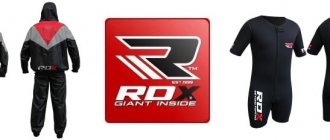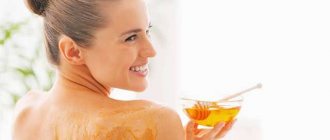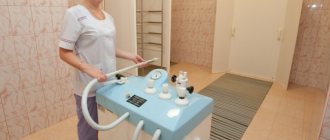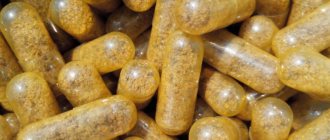The use of local air cryotherapy in aesthetic rehabilitation programs.
Panova O.S. - Doctor of Medical Sciences, Professor, Smirnova E.V. — dermatologist-physiotherapist, Center for Cosmetological Correction of the Central Clinical Hospital of the Russian Academy of Sciences “Eklan”
The healing and healing properties of cold for aesthetic purposes have been used since ancient times: healers of ancient China, Egypt, Greece, Rome recommended cold water, ice, cold bandages to treat inflammatory skin diseases, to cleanse, lighten the skin, to give it elasticity and tone. In Russia, the clinical use of refrigerants in dermatology and cosmetology began in the 50s of the 20th century. traditionally developed in two methodological directions: cryodestruction and cryomassage.
Cryodestruction is a surgical method of tissue destruction and removal of infiltrates, neoplasms, including those of viral origin, using ultra-low temperature, the source of which is liquefied gases.
Cryomassage is the therapeutic, preventive, health-improving use of various coolants using massage techniques: ice, frozen phytosolutions, gel packs, liquid nitrogen. The use of liquid nitrogen as a cryotherapeutic agent, despite its simplicity and low cost, has a number of disadvantages: a high probability of frostbite, a high degree of subjective factor, limited exposure zones, discomfort (especially when affecting sensitive areas), difficulty in dosing and regulating cryotherapy, instability of operating temperatures, the need for storage and high consumption of liquid nitrogen. All these objective factors have reduced interest in cryotherapy. The creation of air cryotherapy units in the early 90s (in Germany and Japan) not only restored its position, but moreover, turned cryotherapy into an entire area of scientific and practical research, including in aesthetic medicine.
Air cryotherapy (ACT) is the latest technology for cooling the skin and subcutaneous tissues, which uses dry atmospheric air with an operating temperature from -30°C to -120°C as a coolant. Air cryoprocedures allow you to quickly and locally reduce skin temperature by 10-20 degrees; they have undeniable advantages over any other types of cold application: painlessness, safety, physiology, short duration (2-10 minutes), versatility, variability of techniques.
Reliable and reproducible effects of cryotherapy.
The anti-inflammatory effect is provided by several mechanisms: tissue dehydration, decreased activity of inflammatory mediators, an increase in anti-inflammatory cytokines and a decrease in pro-inflammatory ones, inactivation of the collagenase enzyme, and a decrease in the level of C-reactive protein. Local cooling relieves hyperemia, swelling, stasis, normalizes lymph flow, the level of enzymatic reactions, and weakens the allergic component.
The analgesic effect is achieved through a number of mechanisms: a sharp decrease in the conductivity of nervous tissue, activation of endorphin inhibitory systems, neutralization of chemical reactions to acetylcholine, histamine, prostaglandin, which leads to pronounced analgesia, local anesthesia and breaking the vicious circle “pain - muscle spasm - pain”.
Regulation of muscle tone occurs through inhibition of the functions of the gamma motor neuron system, resulting in physiological muscle relaxation, relief of muscle spasms, and contractures. Short-term exposure to moderately low temperatures helps to increase muscle strength and endurance and improve skin turgor.
Activation of metabolism occurs due to carbohydrate metabolism (consumption of liver and muscle glycogen); after carbohydrate metabolism, fat, protein and enzymatic metabolism changes. A restructuring of general metabolism occurs, aimed at changing the structure of the fat layer and the accumulation of macroergs by cells.
Restoration of microcirculation , which is based on the rhythmic change of vasoconstriction and vasodilation with the subsequent opening of arteriovenous anastomoses, leads to improved circulation not only in the microvessels of the bloodstream, but also in the lymphatic channel.
Activation of cellular and humoral immunity occurs due to the normalization of T-lymphocyte parameters, a decrease in serum interleukin IL-1, IL-6, TNF (tumor necrosis factor).
Procedure at home
Cryotherapy can be performed not only in beauty salons and specialized clinics, but also at home. Of course, in this case there is no need to talk about the extreme effects of cold on the body - after all, few people can purchase a special box for personal use in which refrigerated gas will be supplied. Which cryoprocedures are suitable for performing at home:
- Using local cold – we are talking about ice cubes, ice compresses. They are used to treat problem areas of the body - for example, thighs or buttocks with cellulite.
- Pouring cold water, taking an ice shower. This way you can bring yourself to your senses, increase tone and even cause stress to the entire body. The result will be an acceleration of the weight loss process, but only if standard weight loss procedures are carried out.
Cryotherapy at home
Any cryoprocedures at home should be carried out only after consultation with doctors! You need to gradually accustom your body to the effects of low temperatures. Otherwise, there may be a significant deterioration in health, the development of vascular and heart pathologies - you may not think about losing weight for a long time until complete recovery has occurred.
Indications for the use of air cryotherapy in dermatocosmetology.
All the positive effects of cryotherapy are primarily manifested directly in the skin. Therefore, the use of local cryotherapy in dermatology and cosmetology is limited only by individual intolerance to cold procedures.
Treatment of inflammatory and systemic skin diseases : acne, rosacea, seborrhea, atopic dermatitis, inflammatory dermatoses, psoriasis, etc.
Relief of undesirable effects - pain, inflammation, lymphostasis, erythema, irritation that occur after traumatic procedures: electro- and radiosurgery, plastic and laser surgery, all methods of hair removal, various types of dermabrasion, etc.
Regenerative effects - physiological healing of tissues, restoration of surface structure and color, narrowing of pores, relieving spasms, relaxation of facial muscles, restoration of tone, lifting.
Metabolic effects - regulation of metabolic and enzymatic processes, improvement of blood supply and skin nutrition.
Transport effect - improvement of microcirculation and membrane permeability promotes the transfer of corrective substances and energy into the deep layers of the dermis and hypodermis.
Treatment of hypertrophic scars with liquid nitrogen.
When treating hypertrophic scars, freezing must be deep enough and must be accompanied by a subsequent vesicular reaction. For this purpose, 2-3 lubrications with liquid nitrogen
in one session. Then the procedure is repeated several times (2-4 times) after 2 weeks. After 2-3 treatments, scars usually flatten to the level of normal skin.
Due to the fact that scars are prone to growth, after cryotherapy with liquid nitrogen, it is advisable to irradiate with Bucca rays or use electrophoresis with lipase.
For atrophic pigmented scars, traumatic pigmentation (after burns, bruises, etc.), freckles, cryotherapy with liquid nitrogen
carried out in the form of shading, massage until peeling appears.
Approbation of the CryoJet Mini installation.
The CryoJet Mini skin air cooling system is a mobile, no-consumption unit with an adjustable supply of a powerful jet of cold air (-30 C) through a flexible hose to the treated area. Ergonomics, special replaceable accessories, and mobility ensure ease of use of the CryoJet Mini installation in complex cosmetology programs in various modes.
The CryoJet Mini installation operates from a regular 220V power supply. The display shows the required exposure power in the range from 1 to 3, corresponding to a certain flow rate of cooled air (350 l/min - 1000 l/min) and exposure time in minutes (1 min - 25 min). Four interchangeable attachments make it possible to optimally select the parameters of the procedure; for working in simultaneous cryotherapy and laser modes, there is an additional adapter stand and attachment.
All parameters of the procedure should be selected taking into account the patient’s individual sensitivity to cold, the sensitivity of the tissue area undergoing VCT, determined by the nosological form and syndromic manifestation of the disease.
Cryotherapy: how cold is used in cosmetology
Cryotherapy For several decades, liquid nitrogen and its vapors have been successfully used in cosmetology practice.
Cold therapy, or cryotherapy, has become an integral part of a range of cosmetic procedures. Cryotherapy is a treatment method, the essence of which is the effect of artificial cold, which causes stress for the body. Thanks to this action, metabolism improves, hormone production is normalized, blood circulation and the flow of almost all processes in the human body are improved.
Cryotherapy, as a healing and rejuvenating method, has come to us since ancient times. Our ancestors used ice baths to rejuvenate the skin and give it elasticity. In modern conditions, no one uses ice baths, and liquid nitrogen vapor is used as a coolant, the temperature of which can reach minus 150-190 degrees Celsius.
Irina Litus Dermatologist-cosmetologist Cryosauna is a procedure for beauty and youth. -180 for 3 minutes and you come out cheerful, cheerful and full of energy. And the mood for the whole day is guaranteed! The list of indications is long: from improving skin turgor to increasing immunity!
General and local cryotherapy
Cold exposure can be performed for the entire body (general cryotherapy), or for a separate part of it (local cryotherapy).
As for general cryotherapy, it is carried out in a special chamber where the skin is exposed to cold for 2-3 minutes. The advantages of general cryotherapy are that it has a healing effect on the entire body. st. Lev Tolstoy 25/2 Clinic Litus Cryosauna.
Improvement during cryotherapy occurs due to changes in vascular activity. A spasm of small vessels occurs, after which the vessels dilate, which leads to hyperemia, which lasts from 1 to 3 hours. Thus, increased heat generation occurs, nutrition of skin tissue and internal organs, in particular the heart, blood vessels, improves, and venous outflow is also significantly facilitated.
General cryotherapy helps patients recover faster from injuries, spinal diseases, and is also effective for a number of skin diseases.
Cryomassage is the main method of cosmetological cryotherapy
If we focus specifically on cosmetology, then the main method of cryotherapy in this area is cryomassage. These are rhythmic touches of liquid nitrogen on the surface being treated. With this procedure, two processes are possible, depending on the selected mode of exposure.
So, if liquid nitrogen comes into contact with the skin for about 20-30 seconds, then the cold causes cell death. As a rule, this cryomassage regime is used to eliminate various neoplasms, scars, as well as inflammatory processes that occur with acne. It is worth noting that simultaneously with the death of cells in the surface layer during cryotherapy, active stimulation of healthy tissue occurs due to the development of a stress response, as a result of which metabolic processes are accelerated. Thus, it is possible to achieve active cell renewal.
Another important effect that can be achieved with cryomassage is increasing skin tone and turgor. For these purposes, cryomassage is performed with minimal exposure. In this case, the top layer of the skin is not destroyed (as in the previous case). With a small exposure to cold, small vessels narrow and then expand. Later, reserve capillaries are turned on, in which active blood circulation occurs. Under such circumstances, the skin becomes more elastic and smooth, and due to improved blood circulation, the complexion significantly improves, dryness and excess sebum formation disappear, as well as fine wrinkles and enlarged pores.
It is noteworthy that a properly selected cryomassage program can effectively cope with the problem of excess weight concentrated in certain areas of the body. In addition, cryomassage is also effective for certain types of alopecia (baldness).
Types of cryotherapy in cosmetology
In cosmetology, various types of cryotherapy are performed depending on the result that needs to be achieved. Most often these are the following procedures:
Cryotherapy of the scalp. This procedure helps normalize the functioning of the sebaceous glands and also improves blood supply to the follicles, which strengthens the hair and prevents hair loss. Cryotherapy of the scalp is often used to treat certain types of alopecia, to eliminate itching of the scalp, as well as to treat seborrhea and other diseases of the scalp. After several sessions of cryotherapy, hair becomes thicker and stronger. Blood flow to the follicles of the head increases, due to which they receive more nutrients, which also improves their appearance (hair becomes silky).
Cryotherapy of calluses. With the help of cryotherapy, you can get rid of calluses almost painlessly. So, a cosmetologist applies liquid nitrogen to the area affected by the callus using an applicator. In this case, it is necessary to strictly maintain the exposure time so that the cold does not destroy the underlying healthy tissue. Under the influence of cold, the callus tissues die, and a delicate pink skin forms under them, which subsequently becomes normal. The advantages of treating calluses with cryotherapy is that after the session a dry scab forms on the callus, which will protect the wound surface from various damages. It is noteworthy that with this method, wound healing occurs without scar formation.
Cryoelectrophoresis. This procedure boils down to the fact that frozen preparations are introduced into the deep layers of the skin under the influence of a pulsed current, which have the desired cosmetic effects. The cryoelectrophoresis procedure lasts only 15-29 minutes. You can conduct 1-2 such sessions per month. In addition, the cryoelectrophoresis procedure is also used to eliminate fat deposits in problem areas.
Cosmetology also uses other, more specific techniques aimed at eliminating various types of cosmetic defects, benign tumors, problems with hair loss, fat deposits, loss of skin elasticity and others.
Adjustable and dosed parameters of air cryotherapy.
Method of influence: labile, stable, combined.
intensity : low, medium, high.
Duration of the procedure: 1 - 3 minutes - short-term, 5 - 15 minutes - long-term.
area : scanning effects on the curable area and point impact.
The course of treatment involves at least 5 - 15 procedures. It is allowed to carry out up to 3 procedures per day with an interval of at least 6 hours, for example, for acute nosological forms and post-traumatic syndrome.
The temperature of the air flow hitting the skin depends on the distance between the nozzle and the body surface being treated: the smaller it is, the lower the temperature of exposure.
Goals and methods.
For the first time in Russian dermatocosmetology, a scientific systematic study is being conducted on local air cryotherapy.
We present the results of the initial screening stage. The purpose of this stage is an expert assessment of the effectiveness of air cryotherapy in the three most relevant rehabilitation programs: rehabilitation after aesthetic surgeries, involutional changes in facial skin, anti-cellulite correction . The study was conducted at the Eklan Center for Cosmetology Correction of the Central Clinical Hospital of the Russian Academy of Sciences. Three groups of patients were selected for clinical observation:
Group 1. Postoperative rehabilitation: blepharoplasty, rhinoplasty, retidectomy, laser dermabrasion of the face. Group 2. “Fading skin” Group 3. “Anti-cellulite correction.”
Over 6 months, about 800 air cryotherapy procedures were performed, and in not a single case were complications or side effects observed.
| Fading skin | Postoperative rehabilitation | Anti-cellulite correction | |
| Number of patients | 20 | 36 | 15 |
| Age Average | 37 — 58 44 | 31 — 69 38 | 27 — 54 32 |
| Type of therapy | Monotherapy | Monotherapy | Monotherapy Combination therapy |
Criteria for the effectiveness of air cryotherapy : expert comparative assessment of the condition of the skin before and after the course, photography, subjective assessment of one’s appearance by the patient himself.
The healing effect of cryotherapy
Cooling of the skin, or hypothermia, is accompanied by a number of therapeutic effects of a local and general nature:
- The activity of the pituitary gland and adrenal glands is stimulated, producing various types of hormones, incl. adrenalin. Along with hormones, the content of other biologically active substances is normalized - histamine, prostaglandins, acetylcholine.
- Thanks to hypothermia, tissue resistance to oxygen deficiency (hypoxia) and insufficient blood supply (ischemia) increases.
- The tone of skeletal muscles increases. At the same time, painful muscle spasms are eliminated.
- Spastic contractions are also eliminated in the smooth muscles of the gastrointestinal tract. The functioning of the digestive glands is normalized.
- The rheological properties of blood improve - viscosity, fluidity. The blood itself is better saturated with oxygen.
- Myocardial contractility increases.
- Inflammatory foci resolve.
- The immune system is strengthened and the body's resistance to infectious diseases increases.
- Painful sensations are reduced and the pain tolerance threshold is increased.
- Brain activity is stimulated.
- Skin elasticity increases, swelling disappears, pathological skin formations (moles, papillomas) are destroyed, and damaged skin is regenerated.
- The range of motion in the joints increases.
All these effects develop in response to extreme cold exposure during general and local hypothermia.
Therefore, cryotherapy is possible only in a specialized department of a modern institution.
Local air cryotherapy at the Miracle Doctor clinic
- Equipment
Instead of bulky cryosaunas, our clinic uses CrioJet devices for cold treatment, presented in various modifications. They are mobile (can be moved), safe and easy to handle. Atmospheric air is used as a cryoagent (coolant) in the devices. This is the most effective, convenient and safe method of cold exposure. Thanks to their adjustable parameters, they can be used for various types of cryotherapy. - Medical staff
The cold exposure procedure is prescribed only by a doctor. It is carried out by specialists specially trained to operate this equipment. - Safety
Ordinary atmospheric air is used as a cryoagent (cooling medium). Therefore, thermal burns characteristic of other cryoagents, for example, liquid nitrogen, are excluded in this case. - No complications
Cold exposure in a given mode is carried out for a short time - no more than a few minutes. During this time, a therapeutic effect is provided, but complications associated with hypothermia do not develop. Only the superficial layers of the skin are cooled; the cold does not penetrate into the deeper tissues. - Efficiency
Under the influence of extremely low temperatures, the effect of other therapeutic and health-improving techniques is enhanced - drug therapy, physiotherapy, massage, hardening.
Short-term cold effects on skin receptors are accompanied by a number of positive effects. Therefore, cryotherapy in our clinic is successfully used to treat many diseases of the internal organs and musculoskeletal system. It is also used for aesthetic purposes in dermatocosmetology.
Cryotherapy is a physiotherapeutic effect, and therefore it has the same contraindications as other physical procedures: chronic decompensated cardiovascular diseases, open skin lesions, acute infections, pregnancy, mental illness.
Goals of air cryotherapy.
Group 1. “Postoperative rehabilitation.” Pain relief. Removal of negative residual effects: edema, lymphostasis, erythema, spasm of the facial muscles. Launch of regenerative processes. Restoration of microcirculation.
Group 2. “Fading skin.” Increasing muscle tone and skin turgor, lymphatic drainage, skin lifting, swelling removal, improving nutrition and cellular regeneration, smoothing the surface structure and color.
Group 3. “Anti-cellulite correction.” Improvement of microcirculation, lymph flow and outflow of intercellular fluid, massage of the dermis and hypodermis, reduction of congestion, activation of metabolism in the epidermis and dermis, activation of lipolysis.
Skin condition after a course of air cryotherapy.
Group 1. “Postoperative rehabilitation” Improvement was observed after the 2nd - 4th procedure. After the course, inflammation, pain, swelling, and redness were relieved. The hematomas were resolved and the sutures were epithelialized. At the surgical site, the scar is slightly pink, soft, smooth, elastic, uniform structure and skin tone. The increased tone of the facial and orbital muscles is relieved.
Group 2. “Fading skin.” Pronounced positive dynamics after the 5th - 7th procedure. After the course - a significant improvement in appearance, pronounced tightening of the skin of the eyelids, cheekbones, cheeks, chin and neck; aligning the structure and color of the skin, narrowing pores, reducing swelling.
Group 3. “Anti-cellulite correction.” After the course, significant changes occurred: skin lifting, the cellularity of the hypodermis was smoothed, and the tone of the abdominal and thigh muscles increased. Standard measured dimensions decreased by 3 - 4 cm. With the combined sequential effects of CT and mesotherapy, the results were significantly higher: standard measurements decreased by 5 - 6 cm, skin turgor and muscle tone, and a decrease in the density of the fat layer.
All patients noted good tolerance, comfort of the procedures themselves, pleasant sensations, a surge of strength after the procedures, and indicated the severity of positive changes in their appearance.
Positive dynamics after the cryoprocedure were observed long before the end of the course, which increased the patients’ positive attitude towards the course (by 2 - 7 days).
Advantages and disadvantages
Many people doubt the safety and feasibility of undergoing a course of cryoprocedures for weight loss. To make the right decision, experts recommend studying the advantages and disadvantages of this method. Among the advantages can be noted:
- general strengthening of the immune system and, as a result, a decrease in the number of exacerbations of chronic diseases, rare colds;
- getting rid of chronic fatigue syndrome, increasing performance, stabilizing the psycho-emotional background;
- improving the condition of the skin, increasing the elasticity and firmness of the dermis;
- getting rid of the “orange peel”;
- acceleration of metabolic processes;
- disappearance of edema.
But cryotherapy also has disadvantages:
- the weight does not go away quickly and even with the full course it is possible to lose only 3 – 4 kg;
- if you do not follow the classic rules of losing weight, then the lost weight returns very quickly;
- it is possible to develop an allergy to cold.
Cryotherapy for weight loss is not a pleasant relaxation, but rather an aggressive effect on the body. In order to get positive results, you need to be decisive (after all, the cold is extreme) and consistent - not rely on the modern method, but at the same time work on your figure according to the standard scheme.
Conclusions.
Analysis of the screening results allows us to draw the following conclusions: 1. Air cryotherapy is an effective method of intervention in the rehabilitation of patients in the postoperative period and significantly reduces recovery time. In some clinical cases, air cryotherapy was the only treatment of choice. 2. Air cryotherapy has an effective effect on aging skin problems. 3. The use of air cryotherapy in anti-cellulite correction leads to pronounced positive dynamics. 4. Air cryotherapy is effective both as monotherapy and in combination with other methods of treating these problems. 5. The CryoJet Mini air cooling unit is reliable, easy to operate, economical, does not require special maintenance, and fully complies with the standards of an aesthetic medical institution.










